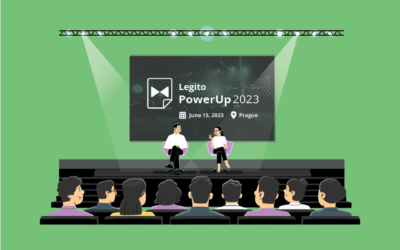Alternative Fee Arrangements
Making Them Work Outside Litigation

Alternative Fee Arrangements
Making Them Work Outside Litigation

This is for the lawyers, those in law firms, and those working in corporate legal teams. I don’t need to provide an introduction to alternative fee arrangements – you either feel the pressure already, or you work in a space where fee arrangements are settled. It’s sufficient to say that I’m writing about any fee not based on hourly rates.
Can we say that we don’t want fee arrangements to drive a race to the bottom? As Seth Godin observes, the problem with a race to the bottom is that you might win. If you’re stuck in a race to the bottom, please don’t buy a tool like Legito unless you also plan to change direction. Don’t automate broken business practises – the only thing that scales is the poor quality outcomes.
The oft-used phrase from lawyers, especially lawyers in corporate legal teams who cannot control workloads by submitting large invoices, is: “do more with less”. Doing “more” is obviously about getting more work done. Less obviously, “with less” means less time, because the current environment is not calling for downsizing in legal teams.
Doing more work in less time is necessary for lawyers’ mental health. Most of us don’t get paid more for working longer hours, and yet most of us have got into a habit of working longer hours to get the job done. For all our faults, most lawyers are completer-finishers and we don’t like letting clients down. Unfortunately, some organisations will bank that goodwill in the interests of higher profits per lawyer (law firms) or tighter control over legal budgets (corporate legal teams). Until lawyers burn out, or the quality of their work suffers – and then it’s too late.
Sadly, many lawyers experience new technology as a further burden on their already-stressed working life. Most legal tech works, and many vendors have improved the user experience, so the root cause is not poor software. The legacy of technology projects is too many solutions aimed at squeezing more out of lawyers, or controlling their work. The classic example is time capture software that seeks to convert every activity into something billable, in the quest for lawyers to reach a target number of ‘billable hours’. Another example is the imposition of systems to deal with the complexity of client engagements: engagement letters, money-laundering checks, KYC procedures, conflict of interest procedures.
It’s time to use technology to help practitioners do good work and leverage their expertise. Give them sharper saws, not just safety guards. Give everyone dual monitors, a comfortable chair and a decent keyboard. After the basics, think more deeply about using automation projects that recognise the human-in-the-loop. Instead of publishing policies and procedures with hundreds of pages, give people access to tools that make the right things happen by default. Don’t leave lawyers to find creative ways to make Office 365 carry their caseload – take time to configure software that makes it easy to store and retrieve what they need in a way that matches working methods. Worry less about automating expertise – you’re not trying to remove lawyers from the loop – worry more about lightening the load. Automate the things that are more frequent causes of human error. Human error is a sign that you’re asking humans to work in inhumane ways.
If a task is capable of being fully automated, great, do it. Such tasks are probably dull for lawyers and they won’t miss them, and clients don’t want to pay for them.
When you equip lawyers to do good work efficiently, and alternative fee arrangements are still undermining reasonable profits, it’s time to stop doing the work. Wait until the market is ready to value it appropriately, or change the fee arrangement to something that does work. Let someone else race to the bottom while you do work that is valued.
Can we say that we don’t want fee arrangements to drive a race to the bottom? As Seth Godin observes, the problem with a race to the bottom is that you might win. If you’re stuck in a race to the bottom, please don’t buy a tool like Legito unless you also plan to change direction. Don’t automate broken business practises – the only thing that scales is the poor quality outcomes.
The oft-used phrase from lawyers, especially lawyers in corporate legal teams who cannot control workloads by submitting large invoices, is: “do more with less”. Doing “more” is obviously about getting more work done. Less obviously, “with less” means less time, because the current environment is not calling for downsizing in legal teams.
Doing more work in less time is necessary for lawyers’ mental health. Most of us don’t get paid more for working longer hours, and yet most of us have got into a habit of working longer hours to get the job done. For all our faults, most lawyers are completer-finishers and we don’t like letting clients down. Unfortunately, some organisations will bank that goodwill in the interests of higher profits per lawyer (law firms) or tighter control over legal budgets (corporate legal teams). Until lawyers burn out, or the quality of their work suffers – and then it’s too late.
Sadly, many lawyers experience new technology as a further burden on their already-stressed working life. Most legal tech works, and many vendors have improved the user experience, so the root cause is not poor software. The legacy of technology projects is too many solutions aimed at squeezing more out of lawyers, or controlling their work. The classic example is time capture software that seeks to convert every activity into something billable, in the quest for lawyers to reach a target number of ‘billable hours’. Another example is the imposition of systems to deal with the complexity of client engagements: engagement letters, money-laundering checks, KYC procedures, conflict of interest procedures.
It’s time to use technology to help practitioners do good work and leverage their expertise. Give them sharper saws, not just safety guards. Give everyone dual monitors, a comfortable chair and a decent keyboard. After the basics, think more deeply about using automation projects that recognise the human-in-the-loop. Instead of publishing policies and procedures with hundreds of pages, give people access to tools that make the right things happen by default. Don’t leave lawyers to find creative ways to make Office 365 carry their caseload – take time to configure software that makes it easy to store and retrieve what they need in a way that matches working methods. Worry less about automating expertise – you’re not trying to remove lawyers from the loop – worry more about lightening the load. Automate the things that are more frequent causes of human error. Human error is a sign that you’re asking humans to work in inhumane ways.
If a task is capable of being fully automated, great, do it. Such tasks are probably dull for lawyers and they won’t miss them, and clients don’t want to pay for them.
When you equip lawyers to do good work efficiently, and alternative fee arrangements are still undermining reasonable profits, it’s time to stop doing the work. Wait until the market is ready to value it appropriately, or change the fee arrangement to something that does work. Let someone else race to the bottom while you do work that is valued.
More Weekly Articles



















